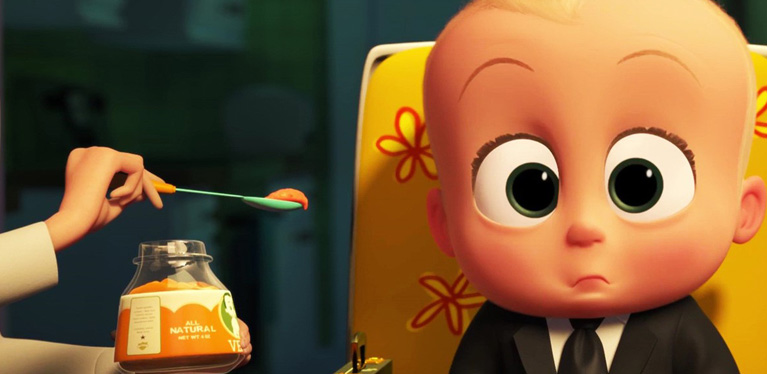Recently there has been a significant rise in ‘baby’ characters in animated movies and shows and it’s not a surprise that they are doing exceptionally well not just at the box office but also as merchandise. There are loads of examples to back this up, some of the most popular ones being ‘Baby Yoda’ and ‘Boss Baby’. Let’s get to know the basic fundamentals of creating such attention grabbing characters.
Proportions:
Let’s take Jack Jack from ‘The Incredibles’ as an example for the body proportions. The easily noticeable design is the big forehead and the absence of the neck.
Children have small legs, heads with the same width as the shoulders and a tiny chin. As the character gets older, the head stays at the same size but the legs and neck grow along with other aspects of the body. In animations, little children can have even bigger heads than the adults. Also make note of it that babies are full of folds, simply because they has more skin available to cover the bones than adults. This makes them appear chubby and cute.
Behaviours:
Remember ‘Boss Baby’? Even though the voice over was provided by sixty three year old Jack Baldwin, the creators of the movie were still be able to match it with a 2 years old character. And that was possible because Boss Baby was one of the exceptions where the plot line itself demanded a baby to act like a professional businessman and not that of a kid. Normally, responses from a child or a baby to their external surroundings, even though immature but are still extremely varied over different ages. This is due to the transition between childhood and the adulthood and the result of this process is characterized by severe changes in both the physical and social status.
To express the characteristics of this transition, it is essential that you observe children’s behaviour in real life. Babies’ curiosity to explore new objects and kids’ the tendency to be talkative and appearing smart are the defining features.
Expressions:
Displaying emotions solely through facial expressions is something cartoons are well known for throughout the history. The major element of conveying emotions such as anger and happiness lies in the eyes and the movements of the nose.
While babies have very small and closed eyes in real life, in animations they are very expressive and giant, in order to create a better harmony with the big head. This technique works with any character which tries to pass the impression of being cute, so it’s more a matter of style and taste rather than a rule. Also notice how their bodies reacts to external stimuli, how their emotions are expressed and how they see the world differently.

While drawing kids is a great way to go back and being one of them, creating them with the correct appeal takes practice, time and lots of observation. And don’t forget to always look for creating subtle differences between characters, even if they’re of the same age. We recommend you to watch the following movies to get the
1) The Incredibles
2) Boss Baby
3) Coco
4) My Neighbor Totoro
5) Spirited Away
Remember that it’s best to just work around improving your initial sketches and adding details to it rather than following a strict guidelines. Get trained in the creative and technical aspects of animation with Arena’s career courses in Animation.
Which is your favourite baby character in Animation movies/shows? Let us know in the comments section.


Comments